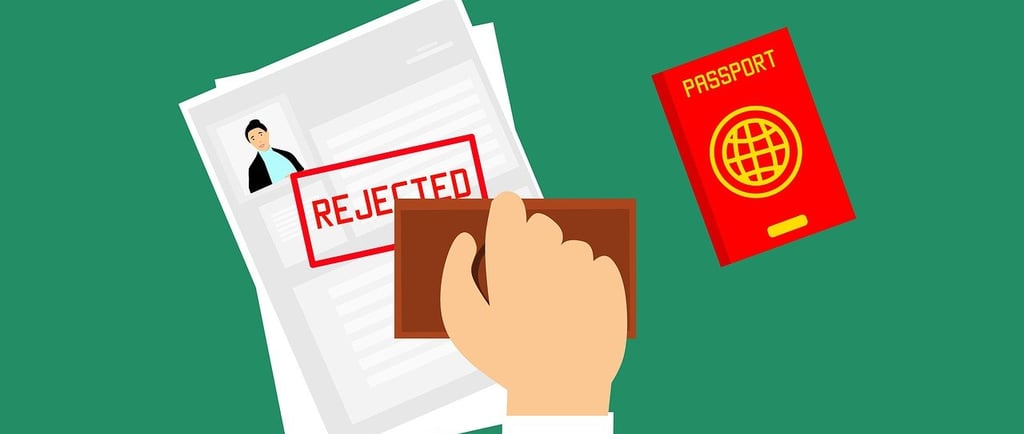What to Do If Your Visa Application Is Refused in Australia
Receiving a visa refusal can be stressful, but it’s not the end of the road. Depending on your circumstances, there are several options to explore. Here, we outline the steps you can take if your visa application is refused in Australia.
IMMIGRATION LAW
Ki
1/4/20252 min read


Receiving a visa refusal can be stressful, but it’s not the end of the road. Depending on your circumstances, there are several options to explore. Here, we outline the steps you can take if your visa application is refused in Australia.
1. Apply for a Merits Review (Administrative Review Tribunal - ART)
If eligible, you can challenge the visa refusal decision by lodging an appeal with the Administrative Review Tribunal (ART).
Eligibility: Most visa categories allow for an ART review, but eligibility depends on your specific visa type. Your refusal notice will indicate if you can appeal.
Timeframe: Appeals must typically be filed within 21 days of receiving the refusal notice.
Cost: The application fee is approximately AUD 3,496, though reductions may be available in some cases.
Outcome: The ART may overturn the decision, confirm the refusal, or refer the case back to the Department of Home Affairs for reconsideration.
2. Lodge a New Visa Application
In some instances, you may be able to submit a new visa application.
Bridging Visa: To remain lawful in Australia during the process, you may need to apply for a bridging visa.
Restrictions: The Section 48 Bar may prevent you from applying for certain visas while in Australia after a refusal. However, partner visas and protection visas are exempt from this restriction.
3. Seek Judicial Review
A judicial review is an option if you believe there was a legal error in the refusal decision. This process is conducted in the Federal Circuit and Family Court of Australia.
Eligibility: Judicial reviews are available only for cases involving legal or procedural errors.
Process: This option typically requires professional legal representation.
Cost: Judicial reviews can be expensive and time-consuming, so careful consideration is needed.
4. Request Ministerial Intervention
In exceptional circumstances, you can request the Minister for Immigration to intervene in your case.
Eligibility: Ministerial intervention is only available for compassionate or compelling situations.
Discretion: The Minister has full discretion and is not obligated to act on your request.
5. Leave Australia and Reapply
If no other options are viable, you may leave Australia and lodge a new visa application from overseas.
Advantages: Leaving Australia removes the Section 48 Bar, allowing you to reapply for a broader range of visas.
Caution: Ensure you have a valid visa before departing to avoid unlawful status or re-entry bans.
Key Takeaway
Navigating a visa refusal can be complex, with tight deadlines and significant legal considerations. Seeking advice from an immigration lawyer is highly recommended to determine the best course of action.
If you’ve had a visa application refused and need assistance, contact us today to discuss your options and take the next steps toward achieving your immigration goals.
Liability limited by a scheme approved under professional standards legislation.
© 2024. All rights reserved.
